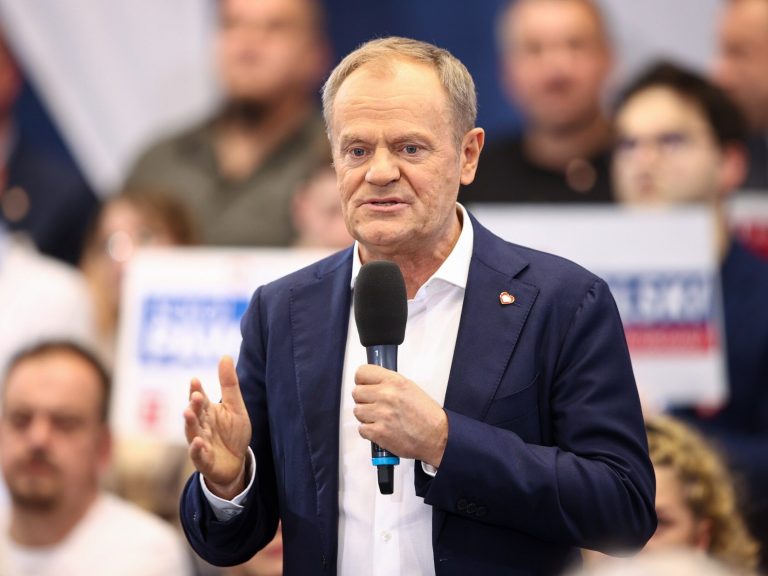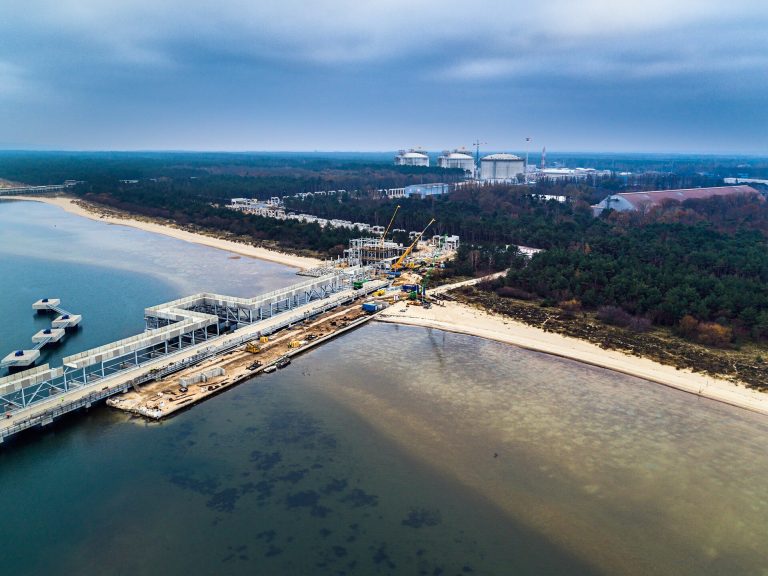Will EU energy market reform affect electricity prices? Expert dispels doubts

– Customers still look at their electricity bill and don’t know what it means. They have trouble understanding what they are actually paying for. New EU regulations may change that – says Grzegorz Tomasik, vice president of Reo.pl, a green energy trading platform
A few weeks ago, the European Union finally approved the energy market reform. The new regulations are to make the price of electricity in the member states more stable, and the market more flexible and resistant to crises. Is a revolution coming?
The direction taken in this reform is very good. There is only one unknown, as sometimes happens with EU reforms. Each of them is later implemented in different ways by the member states. The path from this top-down European idea to its national implementation may still lead through local interpretations. But if we optimistically assume that not much will change, then in my opinion we are heading in the right direction.
On the occasion of this reform, I have my own personal reflection; in 2003/2004 I led a project implemented by Polskie Sieci Elektroenergetyczne. We wanted to implement a market model in Poland based on marginal nodal prices. At that time, however, there was no climate for such a model. It is all the more pleasing that after 20 years we are returning to this type of solution.
In my opinion, thanks to the new EU regulations, we are heading towards a design of the power system that will actually be able to properly adapt and assimilate renewable energy generation and effectively manage this generation.
A lot of technical vocabulary has been used here, but from the perspective of an ordinary customer – will this new reform translate into lower electricity bills?
The reform is to introduce greater transparency into the market processes being implemented and to empower all of its participants, including in particular recipients. It is not just about making it easier for us to change our electricity supplier, but also about better understanding the products offered to us and why their prices differ, and the electricity bills themselves will be more readable. We will soon celebrate the thirtieth anniversary of the entry into force of the Energy Law. And recipients still look at their electricity bill and do not know what it shows. They have trouble understanding what they are actually paying for.
Some consumers still do not know that energy purchases can be made separately from the purchase of distribution services from a local operator and that this cannot affect the certainty and quality of physical energy supplies provided by that operator.
So there is a lot of work ahead of us?
A more aware consumer will, for example, be able to compare products available on the market better. In the case of buying green energy, they will be able to distinguish products in which this energy is “more” or “less” green. Therefore, everything that contributes to greater transparency and greater understanding of the market will serve us.
That is why I believe that with the new regulations, consumers will ultimately make more informed choices and the green energy available on the market will only compete with that which is truly green, and not with that which only pretends to be green.
If we add flexibility to this, i.e. simple moves – take more energy when we have it in excess, do not take too much when production is not high – all these elements will allow us to reduce bills. This must also be followed by appropriate infrastructure. We all still have a lot to do.
And what about the infrastructure? We keep hearing that our networks are either congested, overloaded, or outdated.
This is a big simplification, because the situation is completely different in the transmission network and completely different in the distribution networks. Nevertheless, in both cases the networks must be modernized and expanded to a certain extent, and this requires financial outlays. However, the answer to the question is important; what should these huge outlays be spent on, because only building more kilometers of new networks does not make economic sense and there is no practical possibility of implementing such investments.
So how to modernize?
The money should be used mainly to make these networks simply intelligent. They must be modern systems that manage the work of the entire infrastructure in a dynamic way, based on information obtained online, correctly performed accurate short-term forecasts, supported by energy storage.
Only on such infrastructure will we be able to talk about a proper and effectively functioning market. And then it will turn out that there are no such big problems with our networks in the sense of the common social perception.
And what about the green energy market? Is this electricity only bought by the largest, global corporations, or is it increasingly being bought by small and medium-sized enterprises?
The recipients are very different. We are observing a quite significant change here at Reo.pl, which is occurring with the transition from CSR to ESG. While within the framework of CSR activities, mainly large entities, corporations, were interested in purchasing green energy, which treated this move somewhat as an image element, now, with ESG, we already have specific requirements, very clear guidelines and obligations, which means that this green energy simply has to be used. And here the change occurred in two areas.
What kind?
The largest ones, who already know that they will be covered by ESG reporting, are starting to work on obtaining green energy for their companies seriously. This is no longer a plan for the future, but specific discussions, developing strategies and sometimes a completely new policy.
And the second thing is that these large companies drag down the smaller ones. Companies preparing for ESG reporting ask their partners about these aspects, most often much smaller entities, demanding specific actions and answers.
In this way, small and medium-sized companies are also starting to think about it. There is another element that comes from the customer of a given company, the conscious recipient of products or services. This can be seen in many manufacturing or service industries. Let’s look at hotels or the wellness and SPA industry. Declaring being green, eco, environmentally friendly and using ecological, natural products is not enough.
Customers are starting to ask questions, what about the rest? What about power, electricity, other components of such a business? Is it as green as this biological regeneration? The industry mentioned is an example, but we can talk about many others.
And the customer confuses the business owner, so he looks for where to get green energy?
This is often how it looks. Authenticity is a very important factor in building a brand’s reputation. It is worth mentioning situations that we encounter in our work; let’s assume that a company is determined to completely “green”. Therefore, it also wants to have energy from renewable sources. So it goes the easiest, and in our opinion the most difficult, path, i.e. it builds a renewable energy installation on its own. Of course, in many cases, especially for larger companies, such an investment pays off, but for smaller entities such a solution often turns out to be not the best, both in economic and practical terms (implementation time, covering only part of the energy demand, balancing, etc.). And here comes the educational thread.
Today, many companies in Poland still do not know that they can buy 100% green energy on the market under a contract without having to build their own installation. What’s more, such a purchase is not an obstacle to building their own RES installation in the next step, if it is justified. We have been talking about green energy for a long time, but the number of misrepresentations on this subject is still very high. There is also a lot of simple misunderstanding.
So how does it look in your country? I am an entrepreneur, I want to switch 100% to electricity from renewable energy sources.
Here, in terms of the purchasing process itself, there are no differences between us and the largest operators on the market. You come to us as an owner or manager of a company, ask about the price and other basic conditions, the contract, i.e. length, payment terms, method of settlement, etc.
The differences appear in the range of products offered and the approach to selecting the right product for you. We analyze the customer’s energy consumption profile and propose a selection of sources to best cover the demand. Ultimately, we suggest a specific share of wind and solar energy (the so-called mix) to the customer, which in our opinion will be the optimal solution.
And how can I be sure that it will be green energy and not greenish energy?
We do not buy energy on the stock exchange, nor do we buy it from producers other than renewable energy. Our portfolio includes only energy purchased directly from wind farms, photovoltaic installations, or biogas plants. In addition, we have much more energy produced by renewable energy than sold to end users. This gives our customers the best guarantee.
With ESG reporting, the demand for green energy in the country will only grow. Do we have enough capacity in renewable energy to meet this growing demand?
If everyone suddenly wanted to have green energy, it would be problematic. But fortunately, energy transformation is a process. You have to think in the long term.
And not a short one – one or two years, but a much longer one. Customers are increasingly willing to buy green energy, and the growing interest in long-term contracts (PPA) means that companies producing it have the resources for further investments. There will be more of these installations, so the capacities will also increase. I think that in the coming years, by 2030, we will be able to provide green energy to everyone who needs it.
And what is today the biggest obstacle to the development of this market? We talked a bit about education, about these outdated networks, about legislation.
The list of obstacles is long and multi-threaded. The two most important:
Firstly, complete transparency in defining what green energy is and what energy only pretends to be green. Because if, as we do today, we say that green energy obtained directly from renewable energy sources is just as green as that coming from the stock exchange mix, for which a certificate was also purchased on the stock exchange, then investment impulses for renewable sources will be much smaller.
And then there is the issue of the physical implementation of the supply of this energy, i.e. the previously mentioned electricity networks and the need for their proper development.
We started this conversation with electricity bills in the context of the EU reform, and a few days ago the government also announced further protective packages for Polish consumers to reduce electricity bills.
In my opinion – and I have always been a person with a very market approach – there is no better solution than market pricing of electricity. Only this can introduce rationality into investment decisions and proper pricing of electricity divided into appropriate products, which in turn will lead to optimization of costs related to electricity expenses.
The extraordinary situations that we have been dealing with recently, namely Covid-19, the outbreak of war in Ukraine, are exceptional situations that can be a stimulus for necessary interventions. But the thing about intervention is that it should be adequate in its size and closed within a specified time. That is why it is good that the one concerning the electricity market, and I am referring here to business recipients, has largely ended.
The current maintenance of price limits, freezing prices in the long term, is not appropriate. Already today, recipients could obtain better offers on the market than the price limit that has been proposed. I am talking about business here, of course.
However, the situation is completely different when it comes to households, i.e. ordinary consumers. In this case, a transitional period is still needed to reach market prices. The right solution is certainly to protect the financially weakest recipients, because we cannot lead to a situation where ordinary consumers will not be able to afford to buy electricity.






